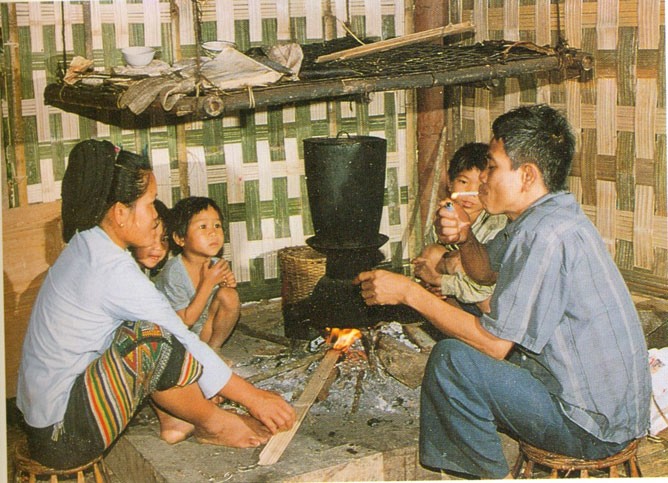(VOVworld) – The Ơ Đu are one of the five smallest ethnic minorities in Vietnam. Most of the 400 surviving Ơ Đu live in Văng Môn hamlet, Tương Dương district, Nghệ An province. Ơ Đu people have their own language, culture, and customs, but these are in danger of being lost.
 |
| Living in small numbers and widely scattered - only a few families in a village - the Ơ Đu are being integrated into more populous communities. (Photo: .vietnamroyaltourism.com) |
The Ơ Đu people used to live in scattered hamlets in Kim Đa and Kim Tien communes. Then in 2006, most of them moved to Văng Môn hamlet, Nga My commune. The Ơ Đu speak Mon-Khmer, part of the Austroasiatic language family.
But close contact with Thái, Khơ Mú, and Kinh people is threatening the survival of their language. They now mostly use Vietnamese or the language of the Thái or the Khơ Mú for daily communication.
Lo Văn Cường, a resident of Văng Môn hamlet, says: “None of the descendants of the Ơ Đu know the Ơ Đu language except for a few old people. When we were small, our parents didn’t speak the Ơ Đu language, so now we can’t speak it. If a Ơ Đu man gets married to a Thái woman, their children will use the language of the Thái. We’re very worried because if the trend continues, our children will never know their ancestors’ language. We’re trying to restore the Ơ Đu language even though there are many difficulties.”
At the moment, only five people in Nghệ An know the Ơ Đu language. All of them are between 70 and 80 years old and their vocabulary is limited to about 100 words. Many of the words are borrowed from other languages. The younger generations only know a few simple words of Ơ Đu.
Deputy Director of Tương Dương district’s Culture and Sports Center Trần Quỳnh Hoa says:“The Ơ Đu people, even the elders, can’t converse fluently in the Ơ Đu language. In a geography book about Tương Dương district, many of the words are borrowed from the language of the Thái or the Kinh people. Even elders like Lo Văn Nghệ and Lo Văn Phúc, the eldest members of the group, can’t talk in pure Ơ Đu language.”
To prevent the Ơ Đu language from being lost, since 2010 Tương Dương authorities have been working with provincial agencies to organize classes in spoken Ơ Đu.
Twenty-two-year-old Lo Thị Thúy Giăng of Văng Môn hamlet says: “I know the Ơ Đu language but just a few words popularly used in family activities like eating a meal. In daily conversation, we sometimes speak in the Ơ Đu language. We use whatever words we know and ask others about words we don’t know. I hope more classes will be held to teach Ơ Đu so we don’t lose our mother tongue.”
Mạc Thị Tím of Văng Môn hamlet says researchers, government agencies, and the hamlet’s elderly are collaborating to compile a reference book to help teach the Ơ Đu language.
Tím explains further: “Everybody now knows the words used in greetings, and inviting someone to eat or drink. In the past they knew almost nothing. I tell young people to use something like a blackboard to write Ơ Đu words for their family. That way everybody can see and practice the words themselves. Whatever words they learn, they should begin using with their family.”
According to Ms. Hoa, more efforts are needed to preserve the Ơ Đu language. “Young people are eager to learn their mother tongue. Everyone is doing their best, but the key is to use Ơ Đu regularly to communicate with each other. Preserving the language will depend on many factors,” Hoa noted.
Recently a delegation of Ơ Đu people from Tương Dương district had an exchange with Ơ Đu people from Khạp hamlet, Muong Khoun district in Laos’ Xiengkhuang province. The Ơ Đu people in Laos, who are believed to have originated from Vietnam’s Tương Dương district, have preserved much of their culture, including the language. It is hoped they can help restore the language and culture of the Ơ Đu group in Vietnam./.